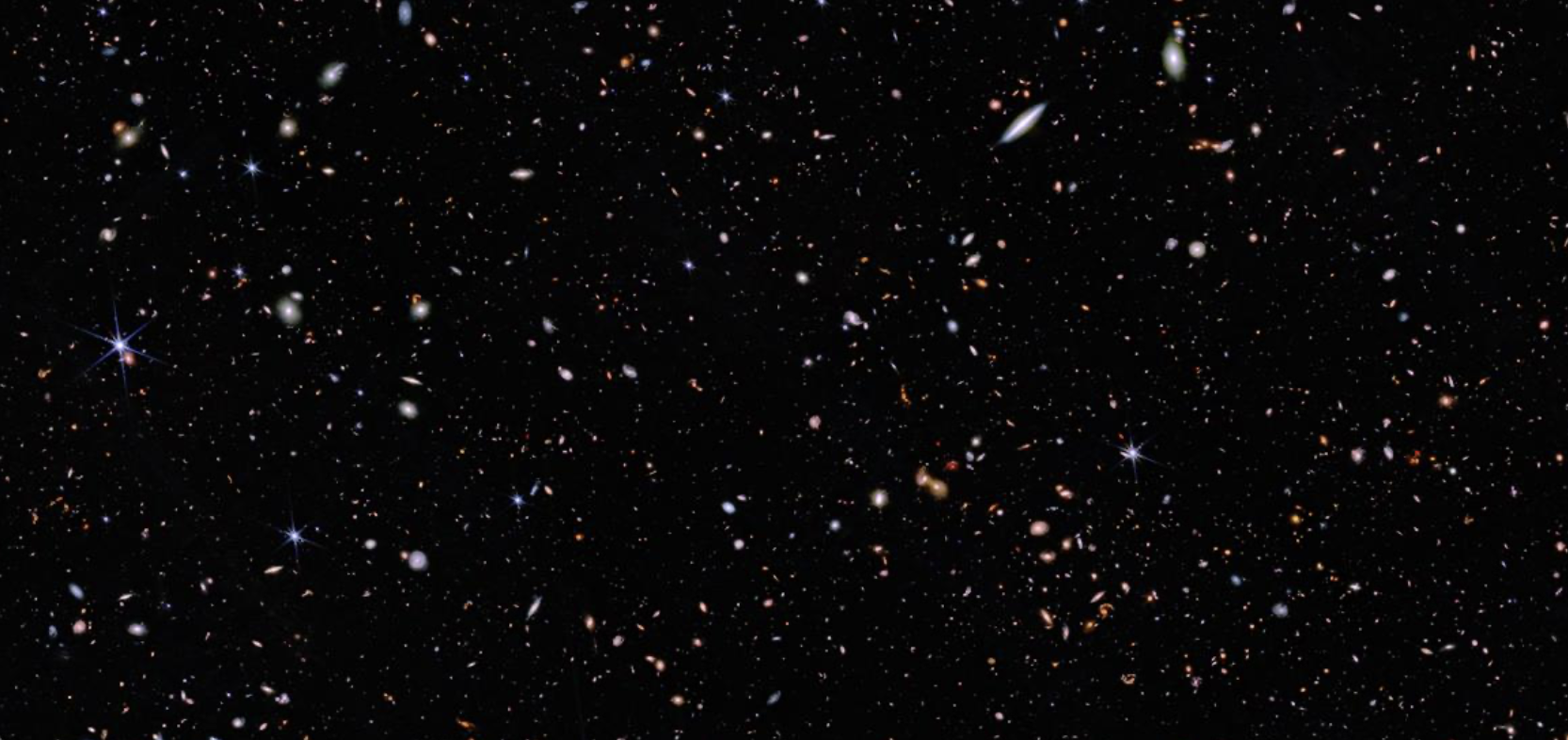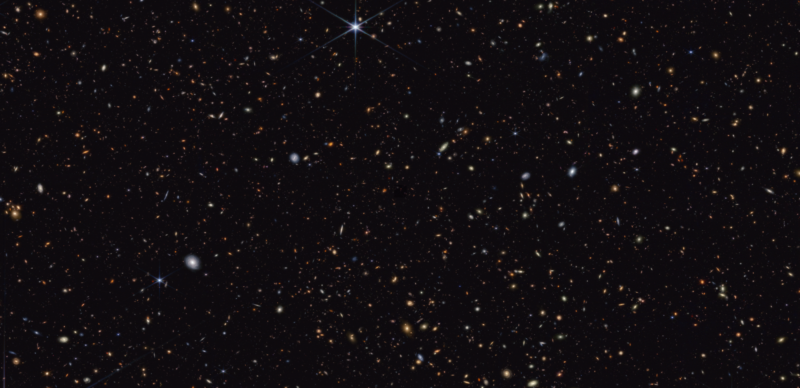
One of the things that the James Webb Space Telescope was designed to do was look at some of the earliest objects in the Universe. And it has already succeeded spectacularly, imaging galaxies as they existed just 250 million years after the Big Bang. But these galaxies were small, compact, and similar in scope to what we'd consider a dwarf galaxy today, which made it difficult to determine what was producing their light: stars or an actively feeding supermassive black hole at their core.
This week, Nature is publishing confirmation that some additional galaxies we've imaged also date back to just 300 million years after the Big Bang. Critically, one of them is bright and relatively large, allowing us to infer that most of its light was coming from a halo of stars surrounding its core, rather than originating in the same area as the central black hole. The finding implies that it formed through a continuing burst of star formation that started just 200 million years after the Big Bang.
Age checks
The galaxies at issue here were first imaged during the JADES (JWST Advanced Deep Extragalactic Survey) imaging program, which includes part of the area imaged for the Hubble Ultra Deep Field. Initially, old galaxies were identified by using a combination of filters on one of Webb's infrared imaging cameras.
Most of the Universe is made of hydrogen, and figuring out the age of early galaxies involves looking for the most energetic transitions of hydrogen's electron, called the Lyman series. These transitions produce photons that are in the UV area of the spectrum. But the redshift of light that's traveled for billions of years will shift these photons into the infrared area of the spectrum, which is what Webb was designed to detect.
What this looks like in practice is that hydrogen-dominated material will emit a broad range of light right up to the highest energy Lyman transition. Above that energy, photons will be sparse (they may still be produced by things like processes that accelerate particles). This point in the energy spectrum is called the "Lyman break," and its location on the spectrum will change based on how distant the source is—the greater the distance to the source, the deeper into the infrared the break will appear.
Initial surveys checked for the Lyman break using filters on Webb's cameras that cut off different areas of the IR spectrum. Researchers looked for objects that showed up at low energies but disappeared when a filter that selected for higher-energy infrared photons was swapped in. The difference in energies between the photons allowed through by the two filters can provide a rough estimate of where the Lyman break must be.
Locating the Lyman break requires imaging with a spectrograph, which can sample the full spectrum of near-infrared light. Fortunately, Webb has one of those, too. The newly published study involved turning the NIRSpec onto three early galaxies found in the JADES images.
Too many, too soon
The researchers involved in the analysis only ended up with data from two of these galaxies. NIRSpec doesn't gather as much light as one of Webb's cameras can, and so the faintest of the three just didn't produce enough data to enable analysis. The other two, however, produced very clear data that placed the galaxies at a redshift measure roughly z = 14, which means we're seeing them as they looked 300 million years after the Big Bang. Both show sharp Lyman breaks, with the amount of light dropping gradually as you move further into the lower-energy part of the spectrum.
There's a slight hint of emissions from heavily ionized carbon atoms in one of the galaxies, but no sign of any other specific elements beyond hydrogen.
One of the two galaxies was quite compact, so similar to the other galaxies of this age that we'd confirmed previously. But the other, JADES-GS-ZZ14-0, was quite distinct. For starters, it's extremely bright, being the third most luminous distant galaxy out of hundreds we've imaged so far. And it's big enough that it's not possible for all its light to be originating from the core. That rules out the possibility that what we're looking at is a blurred view of an active galactic nucleus powered by a supermassive black hole feeding on material.
Instead, much of the light we're looking at seems to have originated in the stars of JADES-GS-ZZ14-0. Most of those stars are young, and there seems to be very little of the dust that characterizes modern galaxies. The researchers estimate that star formation started at least 100 million years earlier (meaning just 200 million years after the Big Bang) and continued at a rapid pace in the intervening time.
Combined with earlier data, the researchers write that this confirms that "bright and massive galaxies existed already only 300 [million years] after the Big Bang, and their number density is more than ten times higher than extrapolations based on pre-JWST observations." In other words, there were a lot more galaxies around in the early Universe than we thought, which could pose some problems for our understanding of the Universe's contents and their evolution.
Meanwhile, the early discovery of the extremely bright galaxy implies that there are a number of similar ones out there awaiting our discovery. This means there's going to be a lot of demand for time on NIRSpec in the coming years.
Nature, 2024. DOI: 10.1038/s41586-024-07860-9 (About DOIs).



3175x175(CURRENT).thumb.jpg.b05acc060982b36f5891ba728e6d953c.jpg)

Recommended Comments
There are no comments to display.
Join the conversation
You can post now and register later. If you have an account, sign in now to post with your account.
Note: Your post will require moderator approval before it will be visible.